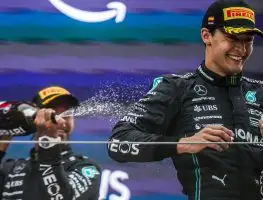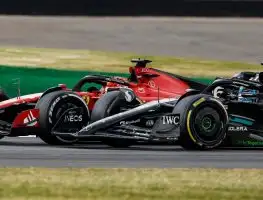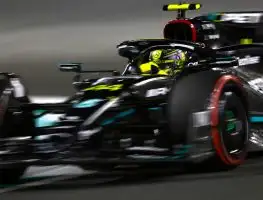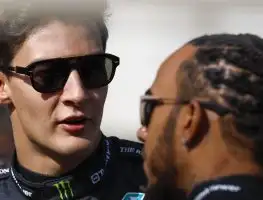Mercedes question whether the Japanese GP should have started on time

Start of the Japanese Grand Prix. Suzuka October 2022.
Mercedes trackside engineering director Andrew Shovlin has questioned whether the Japanese Grand Prix should have started when it did, and raised safety concerns.
Following a wet race in Singapore, it was déjà vu for the teams and drivers at Suzuka with wet weather threatening to delay the race start once more.
However, unlike in Singapore, the grand prix did get under way on time in Japan but it was short-lived with Ferrari’s Carlos Sainz spinning off the track and a return of the wet weather bringing out the red flags.
The FIA and stewards have come under fire for their actions during the incident that triggered the red flag with AlphaTauri’s Pierre Gasly getting uncomfortably close to a recovery vehicle that was on the track.
Shovlin has questioned whether the race should have even started as there was plenty of spray coming up from the tyres during the formation lap.
“Formula 1 is actually very good on the safety issues and sitting down all the teams working together and trying to make sure the sport is as safe as it can possibly be,” said the 48-year-old. “That situation will definitely be reviewed. There are a number of elements to it though.
“The first one is actually ‘should the race have even been started when it was?’ Because when the cars left the grid, you could see there was quite a lot of spray, the drivers were saying the conditions were difficult and perhaps at that point we should have just aborted the start and waited rather than send the cars off.
Red flags & double stacking at a slippery Suzuka
Shov returns to discuss the#JapaneseGPin our latest@akkodis_globalrace debrief
— Mercedes-AMG PETRONAS F1 Team (@MercedesAMGF1)October 12, 2022
“这将会问的一个问题。这是一个lso unusual under those very low-grip conditions that even if you were driving at the Safety Car delta speed it was still very difficult to stay on track, the visibility was extremely poor and we would have probably needed to be going even slower to make sure it’s safe.”
Gasly was alone at the back of the pack and an advertising hoarding dislodged by Sainz’s car wedged itself into theAlphaTaurifront wing.
The Frenchman reacted angrily to having passed the recovery truckwhich brought back memories of the crash that ultimately led to the death of his friend Jules Bianchi in 2014.
Shovlin said it was “impossible” to say recovery vehicles should never be on track but that it was “clearly quite dangerous” at Suzuka.
“Then there’s the question about the timing of sending out recovery vehicles while there were still cars going around the circuit. All of those elements will be reviewed,” said Shovlin.
“There will always be situations where you need to get support vehicles to cars – there might be a driver stuck in there – to assist them while there are cars on track.
“It’s impossible to say this is something we can’t ever do, but clearly on this occasion it did look quite dangerous but principally because of the very low grip and poor visibility.”
The FIA have announced a thorough reviewinto the processwith drivers lining up to criticise the action taken at Suzuka by the governing body.
Read more:FIA’s lack of immediate transparency opens the door for speculation to run rampant






